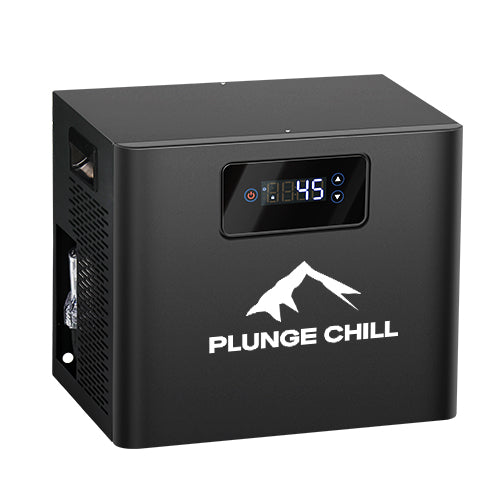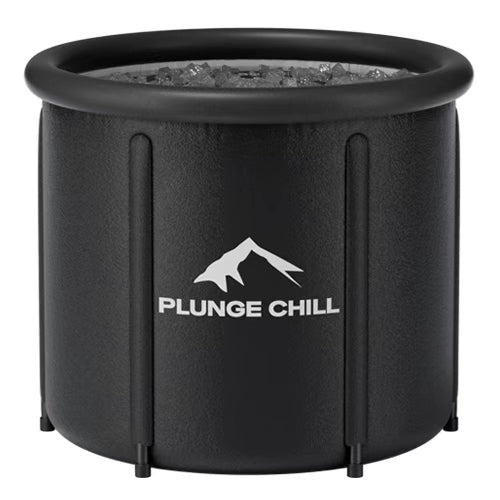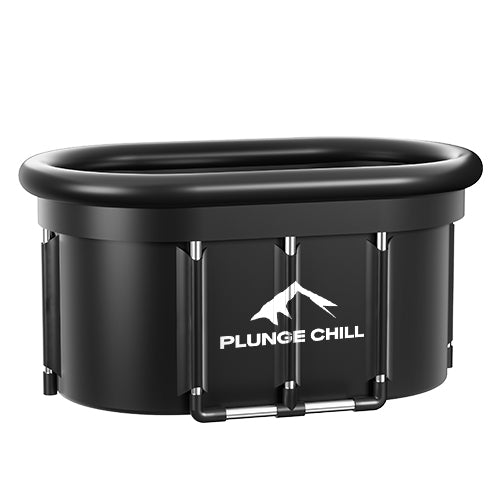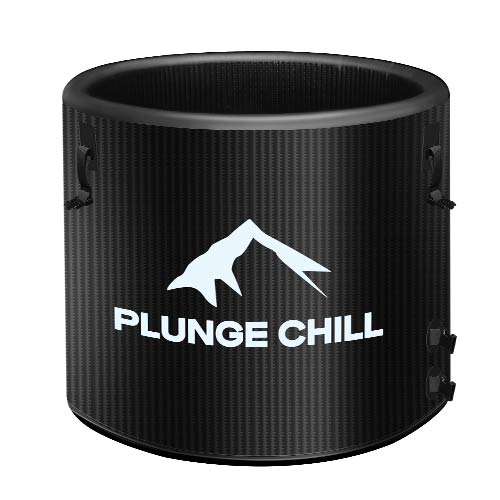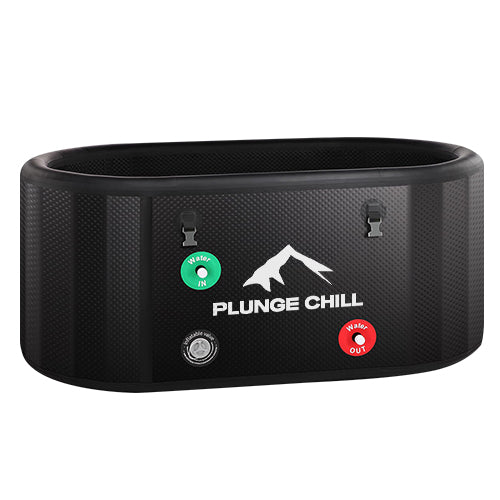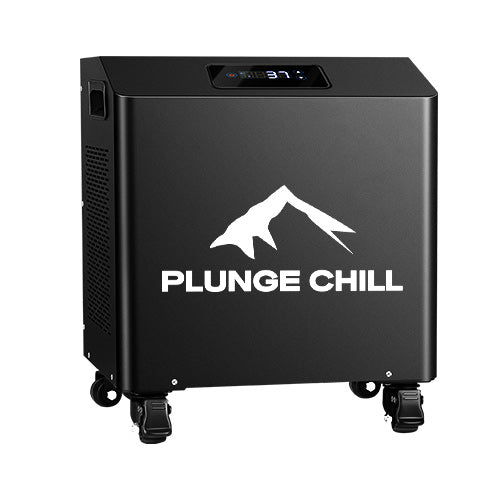The moment you get into icy water, your body freaks out. Your breath vanishes, then comes back in short, panicky gasps. It feels like you've lost all control. But what if the secret to handling the cold wasn't about being tough, but about how you breathe? Learning to control your breath changes the entire experience. It turns a shocking moment into a powerful tool and lets you trade panic for a deep sense of calm. This guide will show you exactly how.

Why Your Breathing Goes Crazy (It's a Survival Thing)
That wild feeling is your body's built-in alarm system. It's called the Cold Shock Response, and it's completely automatic. The second the cold hits your skin, your brain gets an emergency signal and triggers a few things right away:
- The Gasp: Before you can stop it, you take a giant, sharp breath in.
- Fast Breathing: You immediately start breathing way too fast and shallow. Your body thinks it's in danger and is trying to load up on oxygen.
- Racing Heart: Your heart starts pounding. Your body’s "fight-or-flight" mode is on, and your blood vessels tighten up to keep your core warm.
Think of it this way: your body is slamming on the gas pedal. But at the same time, the cold on your face activates something called the vagus nerve, which is like your body's brake pedal. So now you're flooring the gas and the brake at once. By controlling your breath, you can tell your body to ease up on the gas and start using the brakes.
The Payoff: Why Bother With All This Breath Stuff?
When you learn to breathe through that first wave of panic, you unlock the real benefits of the cold plunge.
- Feel Less Stressed: When you breathe out slowly on purpose, you send a message to your brain that says, "It's okay, we're safe." This flips you out of panic mode and into a state of clear, calm focus.
- Build Mental Strength: Every time you face the cold and use your breath to stay in control, you're training your brain to stay calm under pressure. This helps in all parts of your life.
- Boost Your Mood: Studies show cold water can have a positive effect on your mood. It helps your brain get better at managing focus and emotions, leaving you feeling sharp and refreshed.
- Breathe More Efficiently: Panicked breathing wastes energy. When you breathe slow and deep, your body uses oxygen much better, which helps you stay warm and in control.

Before You Get In: Your 2-Minute Prep
A great ice bath session starts before you even see the water. A couple of minutes of prep makes a huge difference.
Belly Breathing
This is the most basic, calming way to breathe. It’s about taking deep breaths from your stomach instead of shallow sips of air from your chest.
- How to do it: Sit or lie down. Put one hand on your chest and the other on your stomach. Breathe in slowly through your nose for 4 seconds and feel your stomach push out. Your chest should barely move. Then, breathe out slowly for 6 seconds and feel your stomach fall.
- Why it works: This simple exercise tells your whole body to relax. Do it for a couple of minutes right before getting in.
The Wim Hof Method (Beginner's Version)
This breathing workout makes a big difference for handling the cold. It gets your body loaded with oxygen and ready for the shock. It's used by lots of people, including podcaster Joe Rogan, who often talks about how it helped him master the ice bath.
How to do it (Always do this somewhere safe, like on the floor, but NEVER in water):

- 30-40 Power Breaths: Take a big breath in, filling your belly then your chest. Then, just let the air go. Don't push it out. Repeat this 30 to 40 times at a steady pace. It's normal to feel tingly or a little lightheaded.
- The Hold: After the last breath out, just hold your breath. Don't force it—just wait until you feel the urge to breathe again.
- Recovery Breath: When you're ready, take one giant breath in and hold it for about 15 seconds.
- Repeat: Let that breath go and start the cycle again. Do this 3 times through.
What it’s doing: This gets your body's chemistry ready for the cold, which makes the initial shock much easier to deal with.
Okay, You're In. Here's Your Game Plan.
This is the moment. It’s simple.
The first minute is the hardest. Your only goal is to control your exhale.
- Breathe In Before You Go In: Take one last, deep belly breath.
- Breathe Out as You Go In: As you lower yourself into the water, start a long, slow exhale through your mouth. Making a "sssss" sound can help you keep it slow and steady. This trick is the key to stopping that first gasp.
The First 60 Seconds: Your Only Job
Long Exhales are Key: For that whole first minute, make your exhales longer than your inhales. Breathe in for 3 seconds, then out for 6 seconds. This is the fastest way to tell your body that you are in control and everything is fine.
Staying Calm for the Rest of the Plunge
- Breathe Through Your Nose: In the beginning, breathing in through your nose and out through your mouth is fine. But as you get comfortable, try breathing only through your nose. It’s a naturally calmer way to breathe.
- Keep Up the Belly Breaths: Don't forget to breathe from your stomach. Short, shallow chest breaths are linked to panic. Deep belly breaths keep you calm and even help you stay warm.
-
Try Box Breathing: Once the initial shock is over, this technique is a great way to settle in. It’s easy to remember:
- Breathe in for 4 seconds.
- Hold your breath for 4 seconds.
- Breathe out for 4 seconds.
- Hold your breath for 4 seconds.
- Just keep repeating that square. It gives your mind a simple job to do.

A Quick Cheat Sheet for Breathing
| Breathing Method | Duration/Pattern | Best Used For | Key Benefit |
| Belly Breathing | In 4 sec, Out 6 sec | Pre-plunge prep & staying calm | Natural relaxation |
| Wim Hof Method | 30-40 breaths + hold + recovery (3 cycles) | Pre-plunge warm-up | Prepares body for cold shock |
| Long Exhalations | In 3 sec, Out 6 sec | First 60 seconds in water | Stops panic response |
| Box Breathing | 4-4-4-4 pattern | After initial shock | Maintains focus & calm |
Surfing legend Laird Hamilton is a great example of someone who stays calm under pressure. His intense training is built on controlling his breath in extreme situations. For him, breathing isn't automatic—it's a tool he uses to stay in control. He proves that your breath is your anchor in that icy water.
Setting Yourself Up for Success
To really nail your breathing, you need to focus. That's hard to do if you're worried about your setup—like dealing with bags of ice or wondering if the water is clean.
A reliable setup makes a world of difference. The Plunge Chill Chiller gives you a perfect plunge every time by keeping the water at the exact temperature you set. It takes the guesswork out of it so you can put all your focus on your breathing. With a built-in pump, you’ve got clean water ready to go whenever you are. When your setup is easy, your mind is free to do the real work.
After the Plunge: Breathe to Get Warm
When you get out, you can use your breath to warm up from the inside out.
- Gentle Movement: Start moving a little bit. A light squat or swaying from side to side works well.
- Powerful Breaths: Time your breath with your movement. Breathe in normally, then breathe out with a sharp "ha!" while tensing your stomach. This gets your blood moving and helps your body create its own heat.
Proper warming after cold exposure is crucial for preventing hypothermia and ensuring your body safely returns to normal temperature.

Your Breath is Your Secret Weapon
The ice bath is the challenge, but your breath is how you master it. It's how you take control of your body's automatic reactions. When you practice these simple techniques, you change the entire experience. You'll get out feeling calm, focused, and ready for anything.
Mastering Ice Bath Breathing FAQs
Q1: How long should beginners stay in an ice bath?
Start with just 30 seconds to 1 minute when you're new to cold plunges. Don't worry about staying in longer—focus on breathing calmly instead. After you get better at controlling your breath, you can slowly increase to 2-3 minutes. You'll get most of the benefits in the first 2 minutes anyway, so don't push yourself too hard.
Q2: Should I breathe through my nose or mouth in an ice bath?
If you're just starting out, breathe in through your nose and out through your mouth for the first minute. This helps you take longer, calmer breaths. Once it feels easier, try breathing only through your nose—it naturally slows you down and helps keep you warmer. Don't breathe in through your mouth, as this can make you panic.
Q3: Is it normal to feel tingly during Wim Hof breathing?
Yes! Feeling tingly or a little lightheaded is totally normal when doing the Wim Hof method. It just means the breathing is working and changing the oxygen in your body. But always do this breathing while sitting or lying down somewhere safe—never right before getting in the water or while you're in the ice bath. If you feel too dizzy, just breathe slower.
Q4: What's the biggest breathing mistake people make in ice baths?
Most people either hold their breath or start gasping really fast when they first get in the cold water. This makes your body panic and makes everything way harder. Instead, focus on breathing out slowly as you get in. Remember: always breathe out longer than you breathe in during your first minute in the water.
